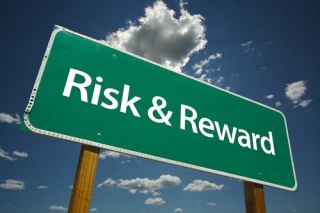Do You Have Something To Sell - Part 2
- Mike Williams
- Jan 25, 2019
- 3 min read
We have raised the link between the value of a business and its risk in a previous blog post. In essence, the greater the risk a business has, the greater return on investment REQUIRED to justify this risk. The inverse of this is a fundamental principle in valuation – the value of the business increases with decreasing risk.
One theory about negotiating a deal for a business is that the first thing that must be dealt with is the buyer’s fear of the unknown – then the price can be negotiated based on the perceived risk.
We consider this when looking at whether a business can be sold for some value other than asset value.
The key fear or risk factors that we consider are:
Key person risk – how reliant is the business on key staff or owners?
Systems and process risk – how efficient does the business operate?
Operational risk - Can the business operate at the levels required?
Industry risk – what trends and changes will affect the business in the short, medium and long term?
Market risk – what changes in the marketplace will impact the business?
Financial risk – what cash flow trends and liabilities are likely in the short term?
But it is the order of how these risks are considered that often dictates:
Whether the buyer is in the game.
The price range that is likely to be considered.
In our experience, once the buyer has dealt with all the other fears and uncertainties that the business is exposed to, the financial risk will then determine the price.
If there is too much non-financial risk, then often the buyer will not make an offer. They have decided that there is too much uncertainty to consider what the price might be to justify the financial risk.
For example, a potential buyer of a chess coaching business is going to need to have some background in chess, be well connected within the market and be satisfied that there is a growing demand before offering any price.
A buyer of an IT business wants to see effective customer management processes and systems in place, ongoing long term agreements for services with customers, growing demand for relevant IT services and up to date technology before reviewing the cash flow to determine the appropriate price range.
Even when approached with an attractive cash flow opportunity, the astute business investor or buyer will check out the uncertainties in the business before going back to the cash flow to see if it stacks up compared to the risks.
There is a balance going on in the minds of the buyer – what fundamental risks and uncertainties are there in a business and does the expected cash flow justify the risk to be taken? It is this balancing act that will tip the price lower or higher than some expected value.
So the question about whether you can sell a business is really a balance between buyer fears and price expectations.
These audits are simple processes that can be completed over the phone and allow us to provide the business owner with a quick assessment of whether a business can sell and if it is likely to meet the owner’s expectations.

